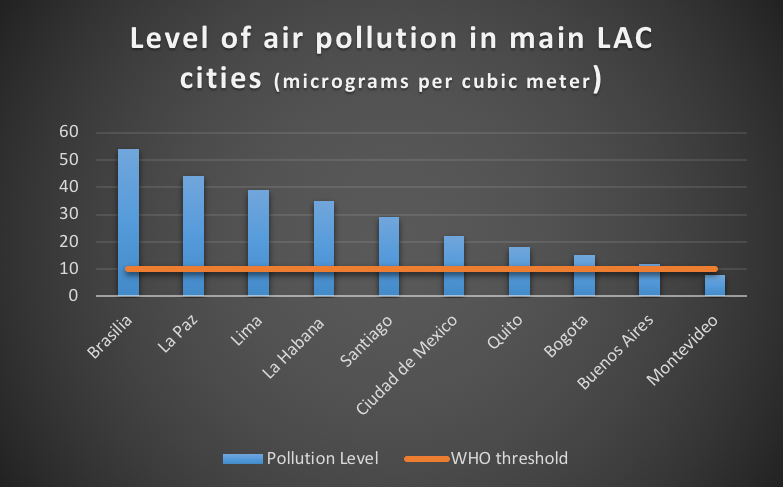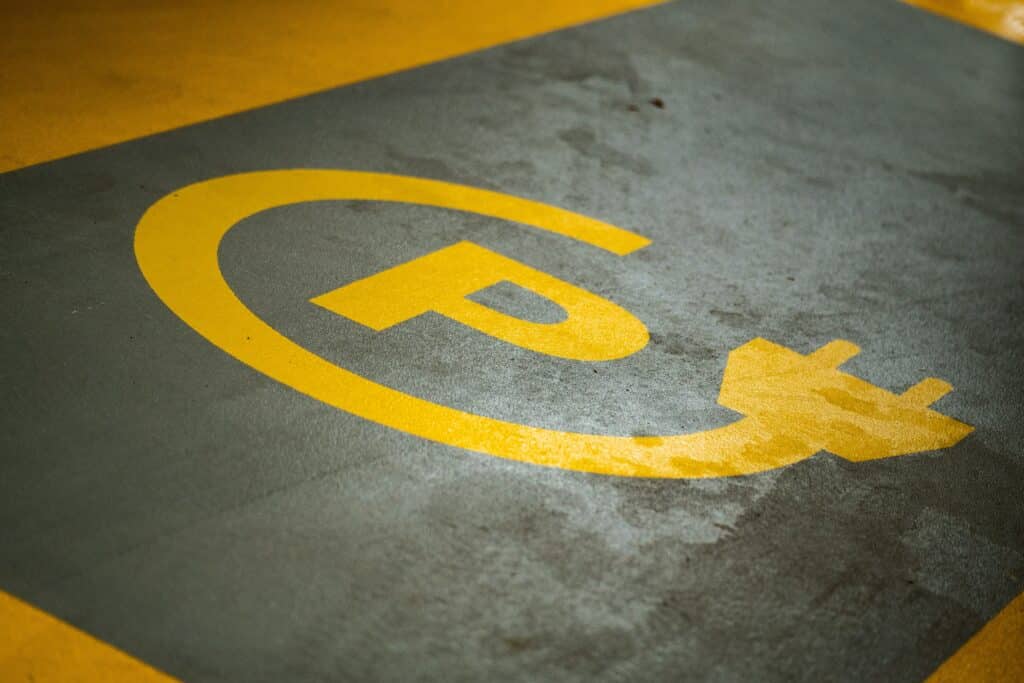Electromobility in Latin America and the Caribbean
Can electromobility help solve health, traffic, environment and energy problems in Latin America and the Caribbean (LAC)?
Topic of the Month: Gearing up for an EV revolution
by Daniel Schmerler Vainstein
Part one of the topic of the month article ‘Electromobility in Latin America and the Caribbean” summarises the benefits of electric vehicles, namely the elimination of greenhouse gases and the reduction of air pollutants in cities, as well as measures to achieve electric and sustainable public transport systems in LAC.
All around the world, it is starting to become clearer that the transport sector will go through great changes in the upcoming years. Connectivity, due to the Internet of Things, is already reshaping the way in which we move around —consumers no longer prefer owning cars, but renting them or using carpooling apps. Other changes that will affect transport in the near future are electrification and automation. Though driverless means of transport are still under development, electric vehicles are already a reality in many parts of the world. This article intends to briefly describe the benefits and current limitations of introducing electric transportation, as well as describing how the Latin America and the Caribbean (LAC) region is already adopting measures to achieve electric and sustainable transport systems.
Two important benefits of electric vehicles are the elimination of greenhouse gases and the reduction of air pollutants in cities. On the other hand, some of the reasons that currently impede mass adoption of electromobility are limited range of vehicles and high vehicle prices. It is important to recall the benefits and limitations of electric transportation, so that we can identify its potential and the areas where policy instruments should be focused, especially in regions like LAC.
Air pollution in LAC
As humankind, we are currently facing one of the greatest problems of our existence: climate change. Electric transportation can contribute to the reduction of greenhouse gases and thus to ameliorate this problem. But also, LAC cities are characterised by having a high degree of air pollution. Let us consider, for example, the level of particulate matter PM2.5. These particles are mainly generated by the combustion process of internal combustion engine vehicles. Exposure to these fine particles can affect a person’s lungs and heart, because due to their size, they can get deep into lungs or even bloodstream.
What is the current situation of air pollution in LAC cities? Regarding fine particles, even though the World Health Organization has set a maximum threshold of 10 micrograms per cubic meter (µg/m3), it is worth to take a look at the pollution levels of the capital cities in LAC: Brasilia (54 µg/m3), La Paz (44 µg/m3), Lima (39 µg/m3), La Habana (35 µg/m3), Santiago (29 µg/m3) and Ciudad de Mexico (22 µg/m3) are a group that requires urgent action. Quito (18 µg/m3), Bogota (15 µg/m3) and Buenos Aires (12 µg/m3) are in the middle part of the chart. Finally, Montevideo (8 µg/m3) is an exception among this group.
This is not something that only takes place in LAC. According to the European Environment Agency, 74% of the EU urban population was exposed to concentrations exceeding the WHO guidelines, and the estimated number of premature deaths in 2015 due to exposure to PM2.5 is 422 000 people in 41 countries.
As we can see, the potential of of the cities we live in is huge, and could bring important benefits in health.

Public transport in LAC
According to a recent report of the Inter-American Development Bank, even though walking and cycling are growing as transport alternatives, most people in LAC are still massively using public transport. However, in many of them, this kind of transport lacks of formal and integrated systems with an acceptable quality. As a consequence, middle and high-income households decide to own a car and contribute to the vehicle fleet and thus to traffic congestions. In this context, we think that policy efforts should be directed to reorganize, formalize and electrify public transportation (metro, trams, buses and taxis), which benefits the majority of LAC citizens.
Let’s take Lima —the capital city of Peru— as an interesting example. This metropolis, with over 10 million inhabitants, concentrates one third of the national population and 81% of their daily trips are based on public transportation. Trips done in means of transportation granted in concession (Bus Rapid Transit, corridor buses and one subway line) only account for 10% of these trips. A non-negligible 30% of these trips use (formal and informal) taxis, but the majority (almost 60%) is done with buses belonging to the “regular system”. This is a non-integrated and non-planned system with no formal bus stops and no regulated prices or quality. Furthermore, the fleet is outdated (and thus, very polluting): 42% of the fleet of these buses are more than 15 years old. This situation, that may be shared to some extent by many cities in LAC, is also an opportunity to reform and electrify our public transport systems.
I emphasize this aspect, because this explains why policies in LAC are not oriented to subsidize private electric cars: the scope that can be reached by investing in public transport is greater and, certainly, more urgent.
LAC has understood the importance of promoting electric mobility in order to help solve health, traffic, environment and energy problems. In part II of the topic of the month instalment ‘Electromobility in Latin America and the Caribbean’, we will dive into electro-mobility and public policy in LAC, as well as the challenges and benefits for the electric system.
Read Part II here
Read the previous instalment of the February Topic of the Month:
Dive in deeper!
New Online Course! Electric Vehicles: a power sector perspective
Gain the knowledge you need to address the #powersector challenges posed by the ever-growing number of #EVs on a global scale in our new 5-week online course! #ElectricVehicles: a power sector perspective
🗓️REGISTER BY 31 August👉Learn more here: https://t.co/FC3eFgcJZ9 pic.twitter.com/4DPznf474A
— FSR Energy & Climate (@FSR_Energy) July 18, 2020






